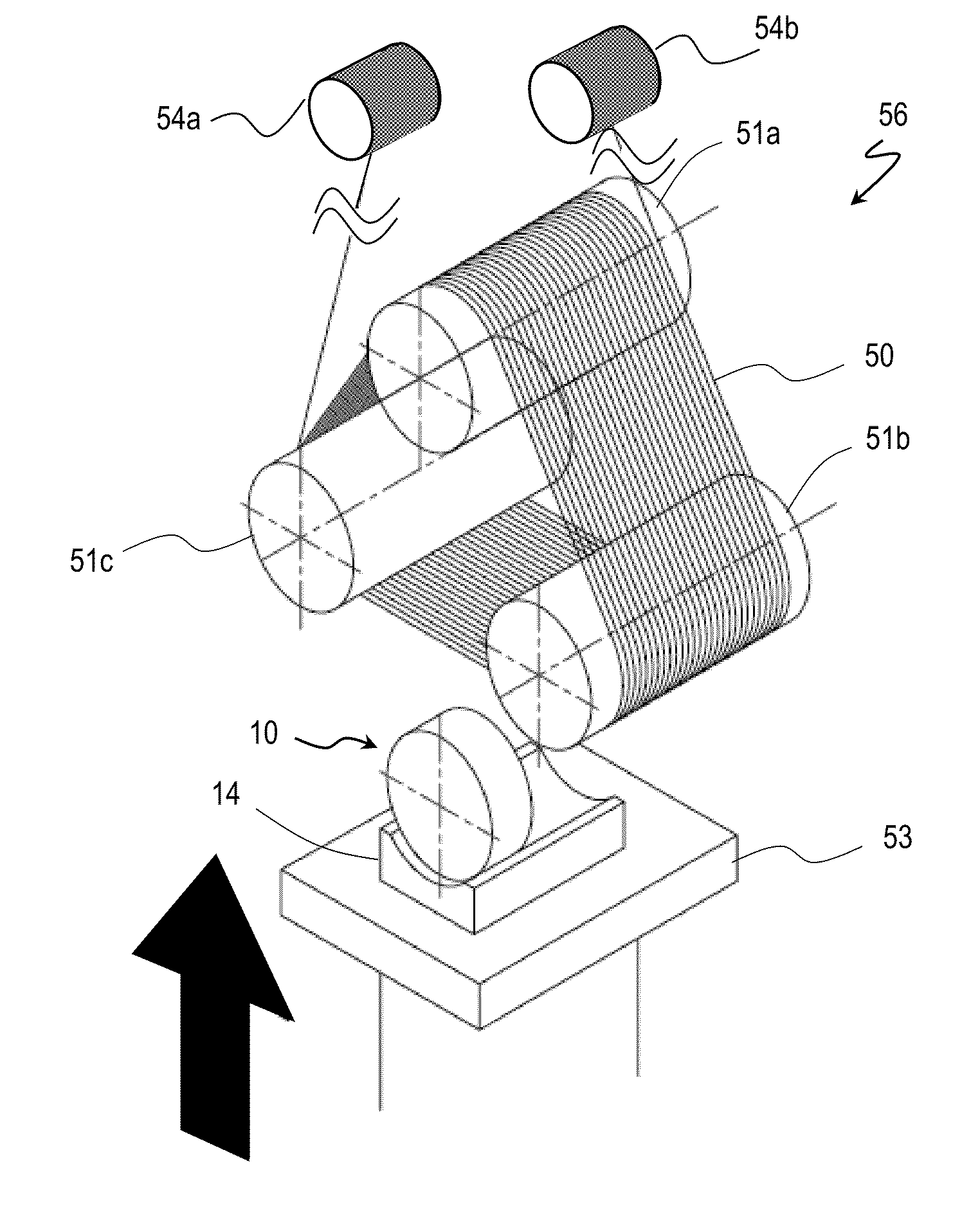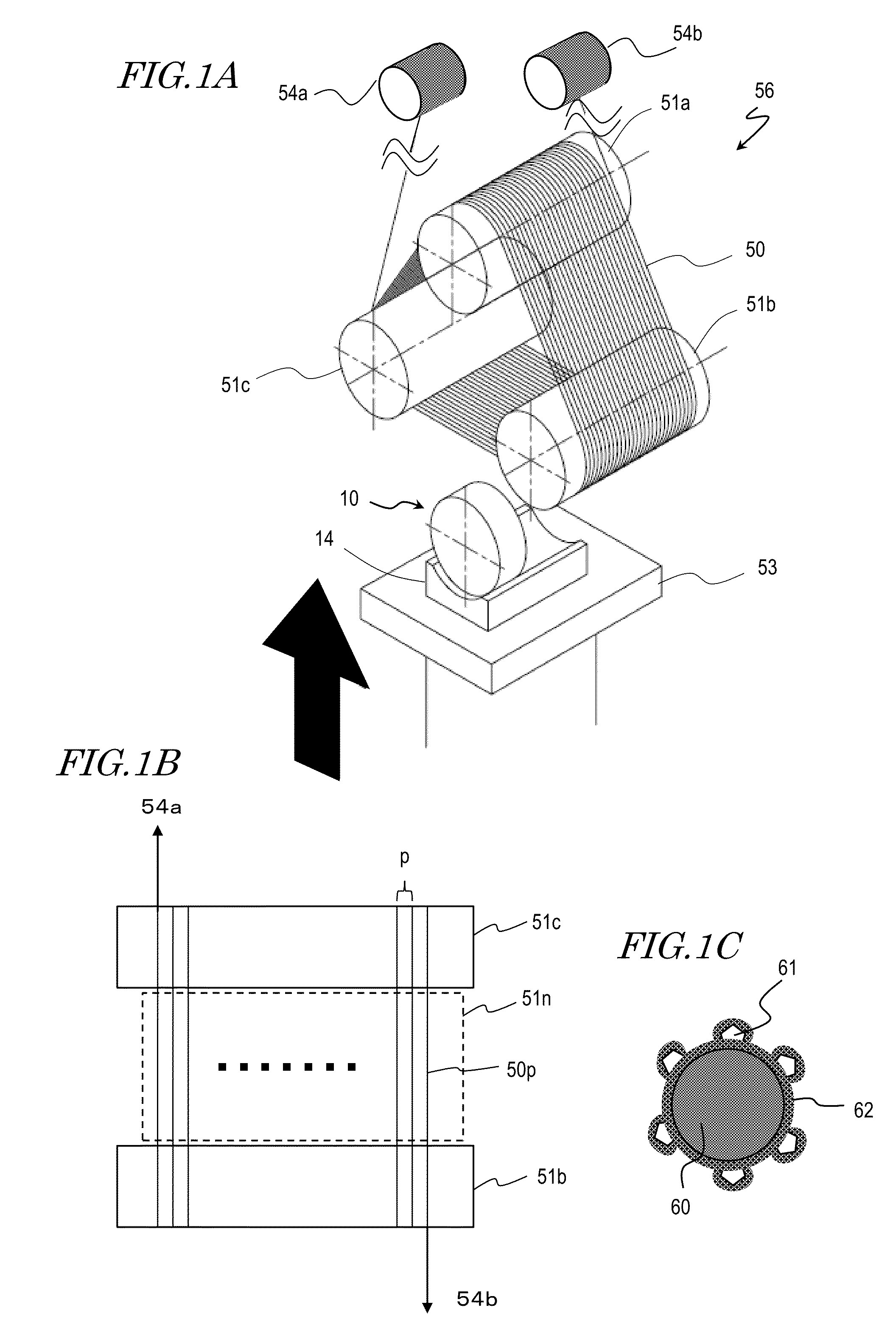Method of cutting high-hardness material with multi-wire saw
- Summary
- Abstract
- Description
- Claims
- Application Information
AI Technical Summary
Benefits of technology
Problems solved by technology
Method used
Image
Examples
examples
[0073]The present inventors carried out some experimental examples in which an ingot of a high-hardness material was sliced by the cutting method of this embodiment to find how much warp the wafers thus sliced off had. The results will be described below.
[0074]As an ingot of a high-hardness material, an ingot of single crystal sapphire in the shape of a circular cylinder with a diameter of 150 mm (i.e., 6 inches) was provided so as to slice off wafers, of which the principal surface was an r-plane. The ingot was cut using the following multi-wire saw, abrasive-particle-fixed wire and abrasive slurry:
[0075]Multi-wire saw: multi-wire saw MWS-34 produced by Takatori Corporation;[0076]Wire: diamond-electrodeposited wire produced by Allied Material (A. L. M. T. Corp.) and having a wire diameter of 180 μm and an average abrasive particle size of 35 μm; and[0077]Abrasive Slurry: DKW-2 produced by Allied Material (A. L. M. T. Corp.)
[0078]The ingot was sliced into wafers representing Example...
PUM
| Property | Measurement | Unit |
|---|---|---|
| Lattice constant | aaaaa | aaaaa |
| Length | aaaaa | aaaaa |
| Abrasive | aaaaa | aaaaa |
Abstract
Description
Claims
Application Information
 Login to View More
Login to View More - R&D
- Intellectual Property
- Life Sciences
- Materials
- Tech Scout
- Unparalleled Data Quality
- Higher Quality Content
- 60% Fewer Hallucinations
Browse by: Latest US Patents, China's latest patents, Technical Efficacy Thesaurus, Application Domain, Technology Topic, Popular Technical Reports.
© 2025 PatSnap. All rights reserved.Legal|Privacy policy|Modern Slavery Act Transparency Statement|Sitemap|About US| Contact US: help@patsnap.com



